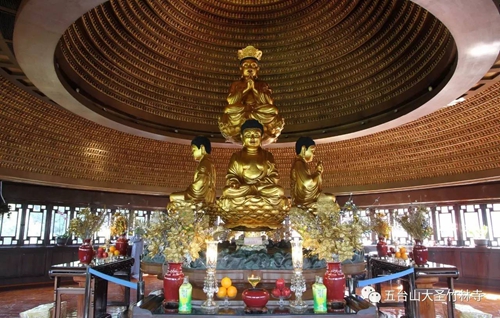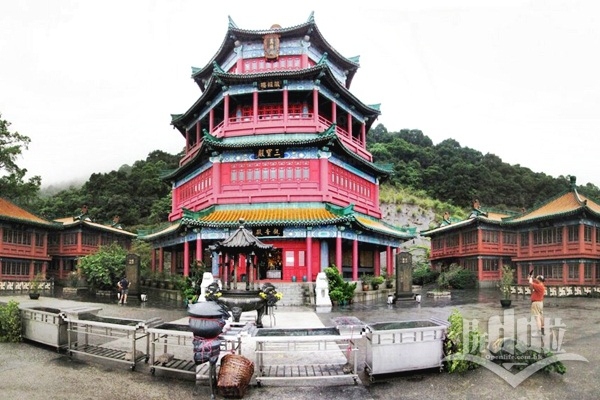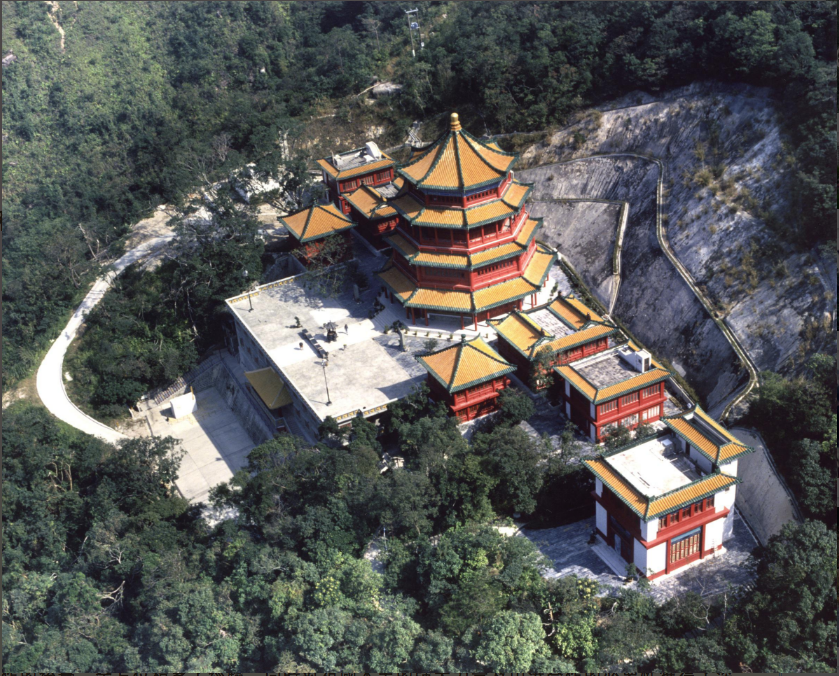Raymond Lam
“Pay respects to the Buddha first, then to me,” advised my preceptor once, when we visited him at his monastery, Guan Yin Temple. “Because we take refuge in the Buddha first, then in the Dharma, then in the Sangha.” He was implying that compared to the Buddha images of our temple, he was actually a secondary priority. In a world where so many scramble over each other to obsequiously flatter or fawn on celebrity teachers, a master who knows he is a flawed mortal creature is the real kind of teacher that should be revered.
Guan Yin Temple (or Kwun Yam Temple) is a Buddhist complex in Hong Kong, situated in the mountains of Lantau Island. It is a beautiful sanctuary accessible most easily by taxi and consists of several buildings, the largest of which is said to have been built in 1910, during the twilight years of the Qing dynasty. I have a karmic affinity with this temple as it was where Master Rong Ling oversaw my initiation into the Chinese tradition. It’s also fitting that the temple is named after Guan Yin: the attendant to Amitabha Buddha, whose presence radiates across this temple complex.
The old main hall’s central shrine features an image of the cosmic Buddha Vairochana. He is the central figure of the Avatamsaka Sutra, the Mahayana scripture that convinced me of the truth of Buddhism, although it is also in the Gandavyuha Sutra, the final book of the massive Avatamsaka, that we glimpse the vows of Samantabhadra to be reborn in Amitabha’s Pure Land: “I vow that when my life approaches its end, all obstructions will be swept away; I will see Amitabha Buddha, and be born in His Western Pure Land of Ultimate Bliss and Peace. When reborn in the Western Pure Land, I will perfect and completely fulfill without exception these Great Vows, to delight and benefit all beings.”

Looking back on my initial foray into Buddhism through the Avatamsaka, and my preceptor’s emphasis on devotion to Amitabha, I now see the hidden, divine wisdom of the Avatamsaka as laying the foundations for understanding the Mahayana vision of the universe and reality, setting the scene for Amitabha’s plan for universal salvation via invoking his Name, as detailed in the Pure Land scriptures.
These days, it is the Guan Yin Hall in the pagoda complex nearby that is better known: a spacious place of worship with a tall, majestic statue of the Thousand-Armed Avalokiteshvara, but expressed as Guan Yin, the Chinese feminine form of the prime celestial of compassion.
In the tall pagoda hall, the Thousand-Armed Avalokiteshvara takes center stage, but go a few floors upstairs in this pagoda, up to the very top floor, and you will find that this newer structure has not lost its Avatamsaka roots. For at the highest level is a beautiful “Ten Thousand Buddhas” sanctum, a holy of holies, if you will, of a multitude of golden Buddha statues decking the ceiling in a circular fashion like the stars blanketing the semi-spherical night sky. In the middle of the hall are the Buddhas of the Five Elements, with Vairochana at the top center and the others taking their respective places in the north, south, east, and west: the western direction being that of Amitabha’s.

Below the top level, the pagoda also has a large library with copious reference material in Chinese, and there is enough space around the complex to host large-scale festivals and retreats.
I’ve been to many pilgrimage sites over the past decade, including the four holy sites of the Buddha’s life. I’ve been to Hiroshima Peace Park, where the spiritual energy was at an extraordinarily high level. I’ve also visited the grottoes of India and Dunhuang, perhaps the best surviving examples of the ancient Buddhist structures that existed in the early days of the Buddhist order. I’m also keen to go to the holy sites of other faiths, if their custodians permit a Buddhist to do so. I always enjoyed ancient and old churches.
At all those places, I’ve never had any religious experiences, nor at Guan Yin Temple. However, I’ve never cared to have any such experiences (see why I don’t think spiritual experiences are a big deal here). What I feel matters is the sense of beauty and infinite preciousness that one feels when visiting these sacred spots. There is some kind of presence that makes itself felt when you are there: regardless of what tradition you follow (or none), you only need to stand still and be mindful to sense it. Perhaps it is nothing less than the Buddha of Infinite Light, Amitabha, whispering within your heart.

